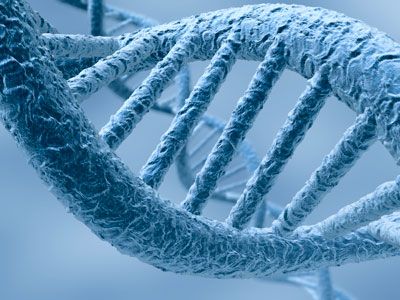Cocoons Deliver Drug Cargo That May Kill Cancer
A “nano-cocoon†DNA drug delivery vehicle may offer several advantages over other nanotechnology-based delivery systems, according to new research.
A “nano-cocoon†DNA drug delivery vehicle may offer several advantages over other nanotechnology-based delivery systems.

A “nano-cocoon” DNA drug delivery vehicle may offer several advantages over other nanotechnology-based delivery systems, according to new research.
“This drug delivery system is DNA based, which means it is biocompatible and less toxic to patients than systems that use synthetic materials,” explains Zhen Gu, PhD, assistant professor in the Joint Department of Biomedical Engineering at UNC-CH and NC State, and senior author on a recent paper describing the work. “This technique also specifically targets cancer cells, can carry a large drug load and releases the drugs very quickly once inside the cancer cell.”
The structure is also relatively easy to manufacture. The process of rolling circle amplification produces a single DNA strand containing multiple copies of the circular DNA template. The template includes a palindromic sequence that helps the single DNA strand self-assemble into a nanoclew resembling a ball of yarn 150 microns in diameter.1
By conjugating folic acid to complementary DNA and hybridizing it to the nanostructure, the resulting folate-spiked nanoclew binds folate receptors and targets the cancer cell surface.
The cargo of the cocoon-like DNA structure includes an anticancer drug, in this case doxorubicin, as well as deoxyribonuclease (DNase) for self-degradation. The encapsulated DNase represents a novel stimuli-responsive drug delivery system that is activated by the cellular environment.
To achieve proper timing of degradation, the negatively charged DNase is encapsulated by a thin, positively charged polymeric shell held together by acid-degradable cross-linkers. At physiologic pH, the shell effectively blocks DNase activity. Once the DNA cocoon is inside the endolysosome of cancer cells, the acidic environment degrades the cross-linkers, freeing DNase to cleave apart the DNA nanostructure and release doxorubicin.
The team chose to test their drug-delivery vehicle with the anticancer drug doxorubicin, a small anthracycline compound that works by intercalating DNA.
“Besides doxorubicin, other small drugs (eg, camptothecin), peptides/proteins or nucleic acids can also be delivered using our formulations. We provide a platform for broad applications,” according to Gu.
The DNA cocoon tackles many of the challenges of drug delivery by nanotechnology. The bioinspired nanoclew may prove to be stable in the circulatory system, targets folate receptors for internalization into the cell, and the rapid, acid-activated release of the anticancer drug enhances therapeutic efficacy.
As Gu and colleagues prepare to launch preclinical testing, with hopes of phase I and II trials to follow in a few years, they are currently evaluating their model in breast cancer cells. The relative simplicity of functionalizing DNA-based carriers may enable broader applications in the future.
“We’re very excited about this system and think it holds promise for delivering a variety of drugs targeting cancer and other diseases.”
Reference
- Sun W, Jiang T, Lu Y, et al. Cocoon-Like Self-Degradable DNA Nanoclew for Anticancer Drug Delivery. J. Am. Chem. Soc. Published online October 13, 2014.